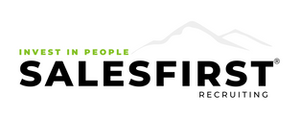SalesFirst explains the current job market
Investors sometimes experience a ‘whipsaw effect” when a security price moves in one direction and then quickly moves in the opposite direction.
SalesFirst Recruiting has watched the employment market experience this effect since 2020. In 2021, after employers took financial aid and saw COVID restrictions loosened, there was a mad rush to rehire talent. The supply of talent was low. The demand for it was high. Employers felt desperate, and the intense competition for labor pushed employee salaries to new levels. Then in January of 2022, the US boasted 467,000 new jobs prompting President Biden to state that America was “back to work.” It felt like a huge win. It felt like it was going to be a great year.
Unfortunately the world still experienced major backlogs for both products & services. Low supply met with high demand resulted in higher prices for just about everything. This led to pressure for employers to increase wages. Once those wage demands were met, the costs of goods rose even higher. This phenomena is called an inflationary spiral.
Enter Fed Chairman Powell- who vowed to reduce inflation by raising unemployment. Yes. You read that correctly. However cruel it sounds, his strategy to raise interest rates to deter growth does work to interrupt an inflationary spiral- but at a high cost.
With the combination of rising interest rates and troublesome geopolitical news, we’ve seen a major shift in the job market. Just in November alone, Amazon, Meta, Twitter and Robinhood laid off more than 120,000 employees. We hear from shaken jobseekers and nervous working professionals every single day. Here’s what you’ll here us telling them:
Opportunistic companies are quietly hiring strong talent. Something becomes a “Market Condition” when it affects all businesses within an industry, but market conditions DON’T necessarily dictate how a company or individual responds. Many of our clients are watching closely to spot previously unavailable talent- And many of those same businesses that were caught flatfooted in 2020 have saved cash to make sure they can make the right moves in a down economy. After all, It wasn’t that long ago that companies couldn’t find enough labor to accomplish their goals. The market is an ever-changing tug of war, and the real winners are the opportunists. Pair up with an opportunistic company- or better yet, let us pair you up.
Recession means “business as usual” for some industries. Healthcare, Government, Education, Financial Services, Food & Beverage, Freight & Logistics, and Utilities- According to Indeed and USC Online, all 7 of these industries not only survived but also thrived during the previous Great Recession and Covid Pandemic. If you value stability, you might consider looking at the industries that need the most help right now. We won’t necessarily know which industries are thriving today- that news comes later. But what’s important to know is that there are industries that are growing right now.
Active, modern jobseekers will still get hired. We see it everyday. Certain professionals know how to evangelize themselves. They regularly post on LinkedIn and share their situation; they connect with recruiters often; and bring an open mind when discussing many different opportunities with employers. If you aren’t a “modern jobseeker,” get on board fast.
What goes down must come up. Nobody knows how long our economic recovery may take, but our economy has proven through past recessions that it does recover. According to Investopedia, the recession in 2008 started its recovery after just 1 year. We expect to see some major hiring spikes in Q1 when new budgets are released, and we are hopeful that Q2 will see greater job gains than Q4 of 2022.
This article was written and compiled by Adam Morris, Corie Hammock, and Tana MacPherson.

